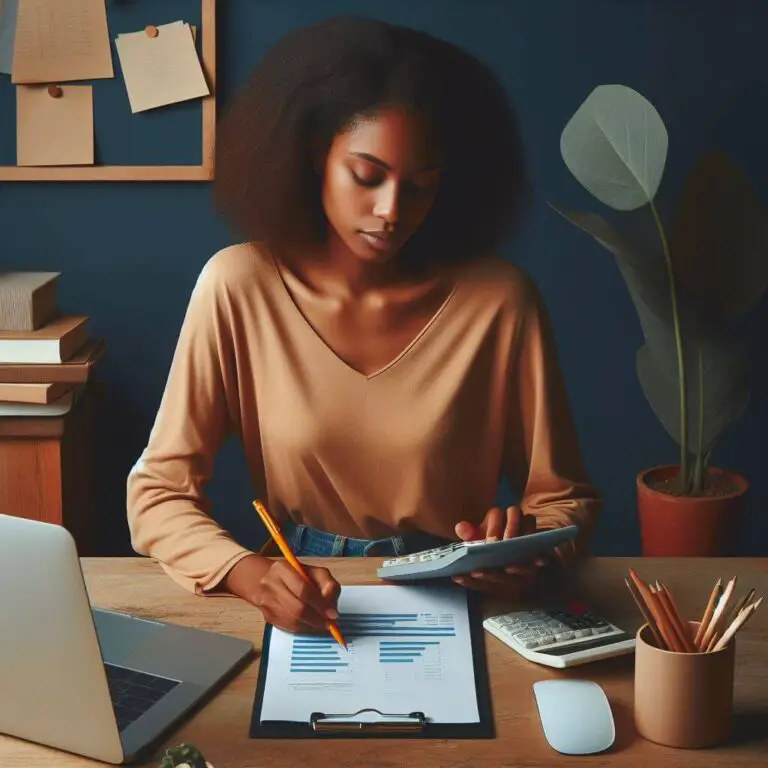Buying an Investment Property In Australia
Last Updated on 11 February 2024 by Ryan Oldnall
I recently purchased my first real estate investment property aged 30. Property investment had never really been on my radar as a priority in life. My main goal had always been paying down my sizeable mortgage as quickly as possible and living mortgage free in my 50 somethings.
This all changed when holidaying in Brisbane, sitting in my hotel room in one of Brisbane’s tallest Skyscrapers, The Infinity Tower. Whilst lounging around in my room I thought to myself wouldn’t it be great to just make money from people just sitting here like I am! And from that point I dived headfirst into researching property investment!
I’d always wondered how to buy an investment property? How does Negative Gearing work? But never took the time to learn as I always thought it was for the rich. However, it is a lot simpler than you might think and overall, a very rewarding experience.
Investment Property Tips For Beginners
The best place to start is having an honest understanding of your financial position. Can you afford the upfront costs associated with Australian Real Estate Investing? The single largest cost in most states is stamp duty, which represents a significant unavoidable expense.
Furthermore, if you don’t have the required 20% deposit for the investment property you will incur Lenders Mortgage Insurance or LMI for short. LMI is essentially you paying for the bank’s insurance to lend you the money.
The next step is to create a budget of all of your household expenses including any discretionary spending which may be ad-hoc in nature. I first began by going through my bank statements (some banks have great monthly categorical spending breakdowns such as Commbank) and capturing all my “set costs”.
For me set costs were those that occurred on a regular basis such as my current mortgage repayments, childcare fees, council rates, TV, phone and internet subscriptions, vehicle registrations and lastly insurances. These costs were typically the greatest with the exception of the ever-growing grocery bill.
Next, I captured the other household expenses such as food shopping, power, gas, water and petrol across a 12 month period. I personally averaged this across 12 months as I have solar power and my energy use can fluctuate quite a bit across the seasons.
Lastly, I captured all discretionary spending such as meals out, workday coffees, GP appointments and any other costs which were more on an ad-hoc basis. I then averaged these across a 3-month period to understand how much we were spending on a regular basis.
Having essentially developed a very in-depth but basic budget it was time to understand what money I had available to me. Fortunately, due to Covid my house value had increased substantially and being in a semi-unique area my house is difficult for Banks to value so I can essentially “set my own price”.
Having had my house valued no less than 7 times in 3 years I was acutely aware of what my house was worth. As a result of this I had a quite a large amount of usable equity available to me.

Buying Investment Property With Equity
Equity or more importantly usable equity is the amount of money that you have available to you draw out from your properties value. Usable equity is calculated on an 80/20 split of the property value minus the outstanding loan amount. 20% of the property value is not usable but the remaining 80% is!
Buying investment properties in Australia with equity is a very viable and utilised strategy. For a more detailed explanation of this process read my How To Buy Investment Property with Equity article.
Let’s say you own a property worth $700,000 and have an outstanding loan amount of $400,000. The unusable equity, which is 20% of the property value, would be $140,000 (20% x $700,000 = $140,000).
To calculate the usable equity, you need to subtract the unusable equity from the total equity. Therefore, your usable equity would be $560,000 ($700,000 – $140,000) minus the outstanding loan amount of $400,000, which equals $160,000.
This means that you have $160,000 of usable equity available to invest in another property or use for other financial purposes.
In my case I had a house value of approximately $850,000 and a mortgage of $525,000. So, my usable equity was $155,000.
Developing a Property Investing Strategy
Now that I understood how much money I had to invest it was time to develop a strategy around my property investing journey. It is important to understand your “Whys” “Whats” and “Hows”. Why are you wanting to invest in property? What do you want to achieve? How long do you want to invest in property for?
Investing in property, especially in Australia, should be seen as a long-term strategy. Not only will you likely make more profit long term but the upfront and selling costs associated with a property alone, as well as the Capital gain tax on investment properties will significantly reduce any potential profits if “flipped”.
It is a good idea to understand what your personal motivators are? Are you attempting to build generational wealth? Money to fund your retirement or generate a passive income now or in the future? Once you have understood your “Whys” it will help define your property purchasing strategy.
My Personal Property Investment Buying Journey
My initial journey started off me looking at apartments. This was partly because of the “coolness” of sitting in one of Brisbane’s tallest buildings thinking wouldn’t it be cool to say I owned one, as well as the relatively low-cost entry into the market.
I quickly realised that not only was Brisbane’s apartment market not a great investment but off the plan apartments were even worse. Just looking at some of the huge financial loses people have incurred in the last decade quickly turned me off.
Other similar veins of thinking were “Uni Student Accommodation” or “Hotel Managed Apartments” but for reasons I decided against this.
So, I did what every good investor would do and googled “Best Property Investment Locations” and “Highest Growth Property Areas”. This threw up a myriad of listings across the nation from obscure mining towns on the East and West coasts, to some of the most affluent suburbs of Sydney.
I joined forums, read blogs and eventually realised that whilst these were informative, I really needed to get back to basics. So, I further refined my personal scope and came up with some negotiables and non-negotiables.
My personal list consisted of:
-
- It had to be a House.
- Through my research I found that both strata and body corporation fees were not something I wanted to be apart of or deal with.
- It had to be 3 bedrooms (or more, if I could afford it)
- It had to be in a “Growth area”
- For me “Growth” meant somewhere that I would realistically expect the property to increase organically in value over the next 15-20+ years. For instance, I considered somewhere like Broken Hill, NSW initially. Broken Hill had seen some growth during Covid but how much in the past 20 years?
- It had to be in my price range of less than $600,000.
- Gross Rental return of 4-5%
- It had to be a House.
This more defined list had me focus on QLD, WA and SA. Having spent 3-4 hours a day looking at properties, regions, suburbs, flood maps I decided I would invest in my own backyard of SA.
Property investment in Adelaide has experienced significant growth throughout Covid and the market has never been as volatile as say Perth (Boom & Bust) and the High/ Lows of Sydney and Melbourne.
Adelaide was also within my comfort zone, and I felt I could learn the market quicker and was more in touch with what was happening in the metro area.
Overcoming Fear of Missing Out (FOMO) When Real Estate Investing
Having ever owned only two homes and not much experience putting in offers it took me a while to build the confidence to make that first offer. I didn’t want to just buy the first house I saw because I was super keen and had done all “this research”.
I went to several opens to not only realise that the property was worth way more than what it was listed for, but the competition would very much out offer me.
The biggest difference for me when looking for an investment was, I had no FOMO. I was looking at a house based on its rentability, growth prospects and amount of work required to update if needed.
My wife and I would often “divide and conquer” on the weekends splitting listings between us as my property searches ranged from the North and West metro right down to Christies Beach in the South. Many weekends were spent attending opens to know in the first 30 seconds that this property was not the right one.
Securing The First Investment Property.
Many Australian property investors don’t in fact invest in their own state. Many do this for a variety of reasons including:
They can’t afford it because they may live somewhere like Sydney or Melbourne, their state may have “lesser” investment prospects, they don’t want to put all their eggs in one basket or they like the idea or challenge of investing interstate.
I opted to invest in Adelaide as it was the most straight forward option for me at the time and it was what I was most comfortable with.
Ironically, the house I ended up securing my wife and I have never seen. It is mere minutes from family and despite having settled on the property I still have not even driven past. A family member did view the property on our behalf which was to all but confirm the general state of the property.
Aside from that I was confident in what the property was worth, its rental prospects (it did come with a tenant – which I will cover in another post) and its growth prospects. I always intended on having a building and pest inspection completed on the property so that would alert me to any major defects which may affect me settling on the property.
Having not viewed the property it has given me confidence that if I ever decide to invest interstate that I would be confident in doing so. I have no attachment to this property other than a mortgage which requires monthly interest only repayments.
That is the single biggest difference for me when looking at purchasing the family home vs a rental investment. What I want in a family home and the things I look for are very different to what a rental needs and what would be appreciated by a renter. The “value adds” at times can be very different.
Securing investment property finance
When it comes to dealing with banks to get a investment property loan, I have dealt with most major banks having had 4 lenders within an 18-month period for my principle place of residence (PPOR). However, for the purpose of securing the investment property I used the services of a broker.
In Australia, brokers are paid commission by the banks and not you as the consumer. When a broker introduces you to a bank, they get an upfront commission which on average is 0.7%~ of the loan balance as well as a trail commission for the life of the loan, 0.15%~.
The advantage I felt of using a broker was the changing landscape at the time of looking to purchase an investment property. The interest rates were rising each month and therefore my serviceability was also reducing with each passing month.
Every lender has different criteria and may view your situation differently. Thus, a capable broker can not only save you time but stop you getting rejected from lenders which is never good!
That being said, I did perform thorough research on the best deals available at time so that when my broker did present options, I had an understanding of whether this deal was suitable and knew of those cashback offers!
Brokers don’t have an exhaustive list of lenders they deal with so it is important to have an understanding of the wider market.
Role of a conveyancer for investment properties
With the offer having been accepted on the investment property I engaged a local conveyancer. The role of a good conveyancer cannot be overlooked. Their role is critical in legally transferring the ownership of the property into my name and ensure the settlement process goes smoothly.
My conveyancer took care of all my legal documents, liaised with my mortgage broker and the selling agent. Whilst my purchase was very straight forward with no encumbrances or easements the conveyancer still looked over all my property related documents and contracts.
Selecting the right Property Management
With this being my first investment real estate investment property, I had not previously engaged any property managers. I approached 3 local property management companies to get an understanding of their fee structure, their rental appraisal of the property, knowledge of the area and a general sense of how we could work together in the future.
Having a responsive and knowledgeable property manager is key. They are your key go to person for any maintenance, tenant interactions or getting advice regarding your property.
As my property was tenanted at the time of purchase my new property manager arranged the handover with the existing agency and introduced themselves to the tenant. See my article regarding the pros and cons of buying investment property with a tenant, . The property manager will now coordinate to do an inspection of the home and report any maintenance items to me for action.
Investment Property Summary
The journey of buying my first investment property took nearly 9 months. From researching every far-off corner of Australia to ending up in my own state was quite a journey. I have learnt a lot and continue to learn more each day.
The challenges posed by finding that ideal property are endless. In the end it is better just to ‘make a decision’ and not be paralysed by fear of ‘getting it wrong’.
Much has been said about prices going down in 2023 with fixed interest rates coming off of their fixed terms. Whilst I don’t hold any strong opinions on this, if I did overpay by $20,000 – $30,000, am I going to care in 30 years’ time? I believe it is better to have time spent in the market, than timing the market.








